Tangier, Palm Beach, San Miguel de Allende—sometimes the design community falls in love with a town, and for good reason. In San Miguel, the love affair begins with colorful baroque and neoclassical architecture, cobblestone streets, and rolling hills, which lend a fairy-tale atmosphere to the city (aiding in its designation as a UNESCO World Heritage Site). The romance has legs, however, thanks to San Miguel’s cosmopolitan-bohemian culture, which blends a deep sense of history, a taste for the arts, and a design-minded grasp on the art of lifestyle: the key ingredients for any expatriate outpost worth its (margarita) salt.
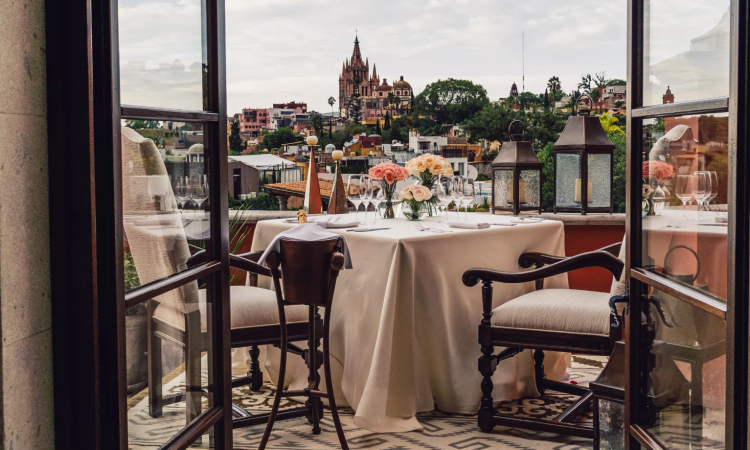
The Rosewood San Miguel de Allende provides some of the best panoramic views in the city.
Here, whether you’re gallery-hopping or viewing a designer’s restored hacienda, you will likely have a drink in hand—probably a local tequila poured in a hand-blown glass. This sense of hospitality—and eye for quality—extends to all aspects of life in San Miguel, from a momentary interaction with an artisan in the central marketplace to a candlelit dinner on the bougainvillea-garlanded patio of a fellow DLN Member. That’s why designers and their friends flock to “SMA,” as the city’s name is frequently abbreviated, and return time and again.
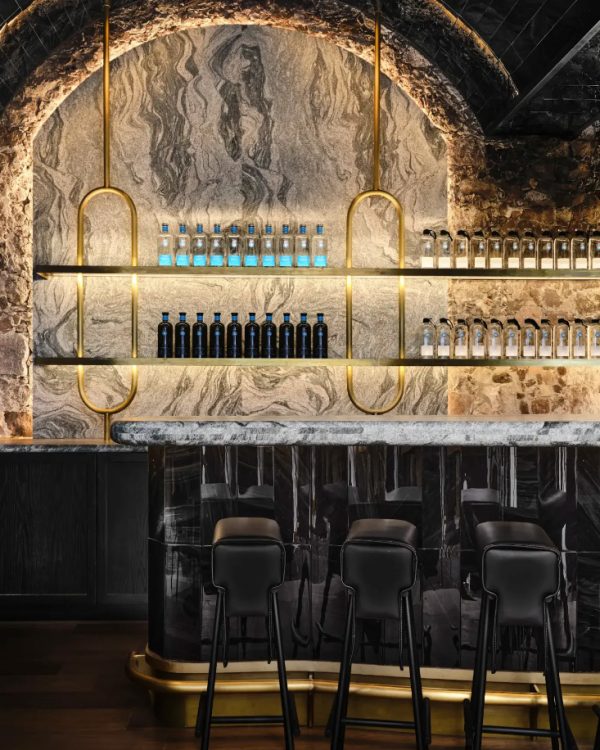
Grounded in contemporary Mexican design, the tequila tasting room at Casa Dragones offers a full sensory experience.
You’ll sample world-famous tequila at the Casa Dragones tasting room designed by Meyer Davis and Gloria Cortina.
San Miguel is the birthplace of Casa Dragones, the renowned small-batch tequila distiller. Its intimate tasting room has been referred to as “arguably” the world’s most luxurious tequila bar, per Forbes. Designed by Meyer Davis and Gloria Cortina, the six-seat tasting room includes ample references to Mexico’s artisanal heritage, as well as contemporary details that showcase the creative strength of both design teams. During the DLN visit, an on-hand tequilier will help participants to discern the complexity of flavors to maximize enjoyment.
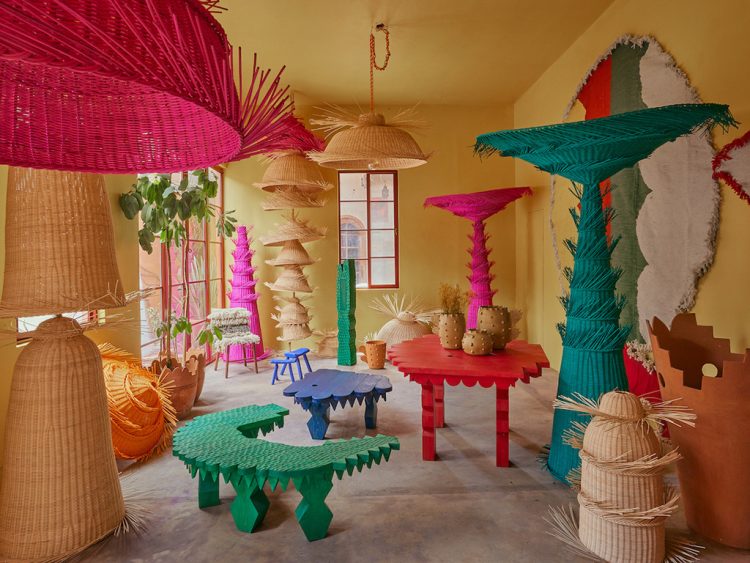
An image from the Mestiz studio last year, courtesy of Mestiz.
You’ll go behind the scenes of local Mexican design by touring the workspaces of AD100 studio Mestiz and designer Claudia Grajales, as well as Claudia’s own San Miguel home.
What makes Mexican designers unique on the global scene? Mestiz, a top-rated design firm, has built up a reputation for visionary objects inspired by Mexico’s environments and artisanal heritage. DLN attendees will experience Mestiz’s texture-rich furniture and objects—which have been styled in interiors across the globe, from the private residences of insightful collectors to window displays at Hermès—in person at the designers’ San Miguel studio. Another Mexican designer, Claudia Grajales of artful design studio, CORE, has dedicated more than 25 years of her life to projects in Mexico and around the world. She invites the DLN to visit her beautifully curated home and studio in San Miguel, where she develops her creative visions.
You’ll have cocktails inside a converted 18th-century tannery that’s now the high-design home of DLN Member Jeffry Weisman.
Twentieth-century Mexican artists and postwar American expats contributed to a richly creative local culture that continues to attract global talent. Designer Jeffry Weisman is one of the many world creatives who have chosen to make San Miguel de Allende their second home. The style of his residence in the city center, where he spent much of the early pandemic, incorporates the local colonial language and combines it with classic furnishings and modern details. According to Jeffry and his partner, Andrew Fisher, they have now designed homes for other expats who are inspired by their retreat. Jeffry and Andrew have extensive experience working with the area’s many artisans, and over cocktails, they may share some of what they’ve learned.
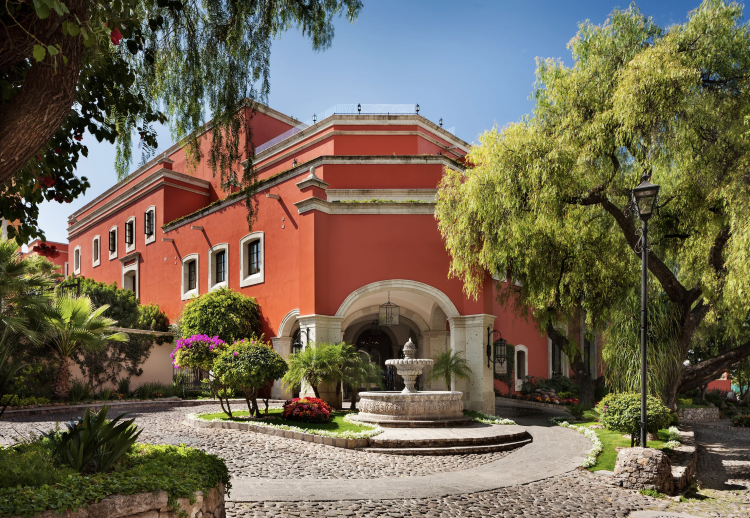
The tranquil exterior of the Rosewood San Miguel de Allende. Image courtesy of the hotel.
You’ll stay at one of the most luxurious hotels in the entire country.
Opened in 2011, the Rosewood San Miguel de Allende is the franchise’s first city-based hotel—and it’s an absolute home run. Even though its prime location makes it easy to access the surrounding city, the hotel itself is a hushed sanctuary, where guests can hide away and relax before venturing back into the day’s activities. The interiors nod toward the colonial style, with beam ceilings and solid wood furniture intended to reflect the locale’s layered history. At the in-house tequila bar, visitors can choose between more than 120 tequila labels, under the guidance of a resident tequilier, and more than 600 wines are on offer at the hacienda-style wine cellar. To finish an evening out and about in the city, watch the sunset over the Parroquia de San Miguel Arcangel from the rooftop tapas bar.
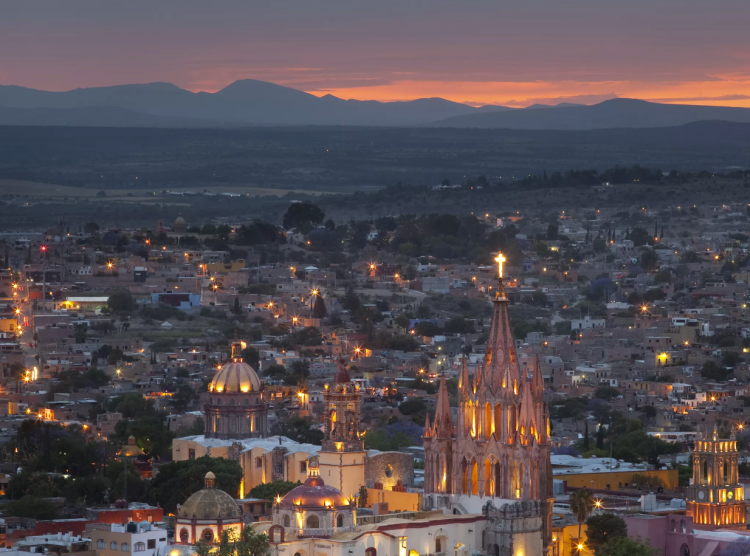
San Miguel is famous for its charming colonial architecture, set amidst rugged mountain landscapes. Image courtesy of the Rosewood San Miguel de Allende.
You’ll examine first-hand some of the city’s greatest architectural triumphs.
To truly experience San Miguel’s colonial charm, you’ll accompany a guide on an intimate tour of the most impressive edifices, including the famous, pink-hued Parroquia de San Miguel Arcángel (which is, again, sharply visible from the Rosewood’s rooftop). After an early version of the church was completed in the 1700s, a 19th-century stonemason, Zeferino Gutiérrez, added the neo-Gothic spires; because his builders could not read, he reportedly instructed his builders by drawing lines in the sand with a stick. Other key stops on the tour range from Casa del Mayorazgo de Canal, a neoclassical home celebrated for its imposing carved wooden door, and the Templo de San Francisco, where the facade illustrates the late Spanish baroque style known as churrigueresque.
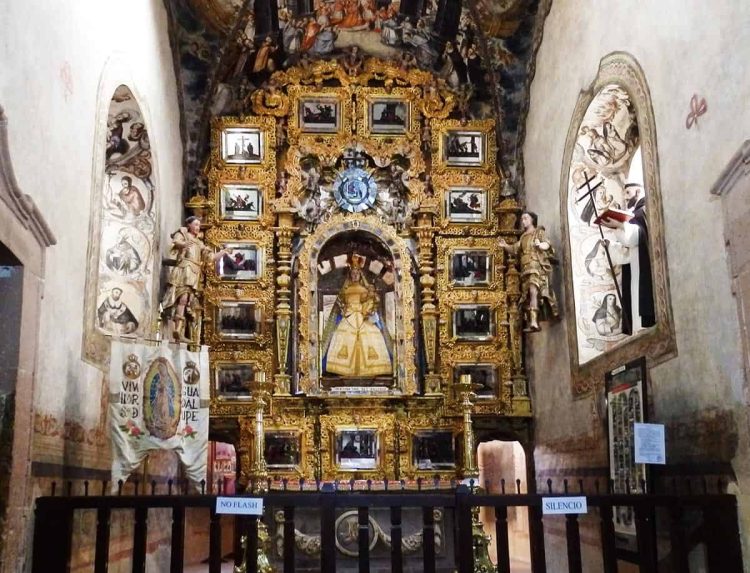
The world-renowned interiors at the Atotonilco Sanctuary attract visitors from around the world.
You’ll experience the iconic Mexican folk baroque murals at the Sistine Chapel of Mexico (also known as Atotonilco Sanctuary).
Located just outside San Miguel, the 18th-century Atotonilco Sanctuary was built under the auspices of a priest, to whom Jesus appeared in a vision and tasked him with building a temple on the exact spot where he had just been dozing. Nearly the entire interior of the church is covered with detailed murals, completed in a Mexican folk baroque style over 30 years. A UNESCO World Heritage site, the sanctuary is still a site of pilgrimage for worshippers: As many as 5,000 supplicants perform penance exercises there during Holy Week.
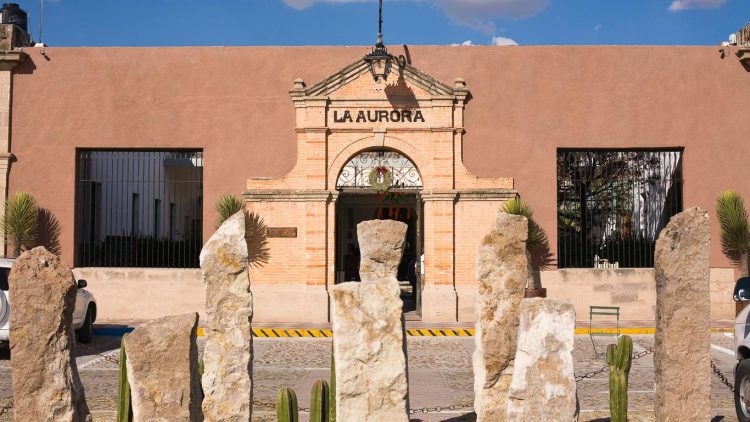
The exterior of La Aurora, a converted textile mill that now serves as studio and gallery space for artisans.
You’ll discover incredible local artworks housed within a former textile factory.
In addition to exploring the famous boutiques and galleries throughout San Miguel, attendees will enjoy intimate experiences with local artisans at a former factory. After nine decades as a textile mill, La Aurora was redesignated as a cultural center for art and design. Inspired artists and creatives transformed the former factory’s halls into their own studios, where they invite curious visitors (such as those from the DLN) to view and discuss their artworks. A host of decorative arts galleries also showcase their wares in the space, offering antiques, jewelry, fine linens, and more.
To add the San Miguel de Allende excursion to your Design Leadership Summit experience, please find more information and register here.